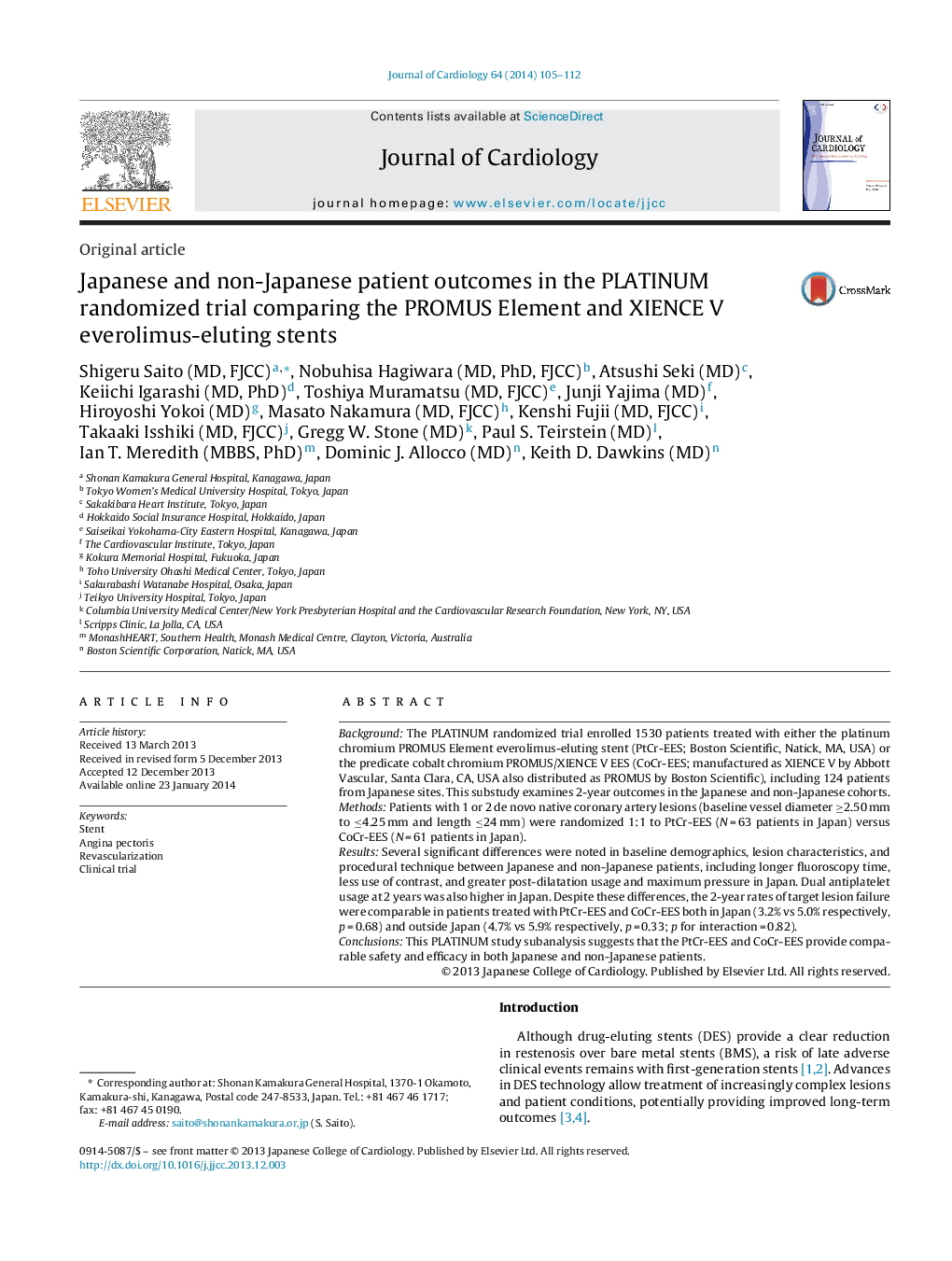| Article ID | Journal | Published Year | Pages | File Type |
|---|---|---|---|---|
| 2962958 | Journal of Cardiology | 2014 | 8 Pages |
BackgroundThe PLATINUM randomized trial enrolled 1530 patients treated with either the platinum chromium PROMUS Element everolimus-eluting stent (PtCr-EES; Boston Scientific, Natick, MA, USA) or the predicate cobalt chromium PROMUS/XIENCE V EES (CoCr-EES; manufactured as XIENCE V by Abbott Vascular, Santa Clara, CA, USA also distributed as PROMUS by Boston Scientific), including 124 patients from Japanese sites. This substudy examines 2-year outcomes in the Japanese and non-Japanese cohorts.MethodsPatients with 1 or 2 de novo native coronary artery lesions (baseline vessel diameter ≥2.50 mm to ≤4.25 mm and length ≤24 mm) were randomized 1:1 to PtCr-EES (N = 63 patients in Japan) versus CoCr-EES (N = 61 patients in Japan).ResultsSeveral significant differences were noted in baseline demographics, lesion characteristics, and procedural technique between Japanese and non-Japanese patients, including longer fluoroscopy time, less use of contrast, and greater post-dilatation usage and maximum pressure in Japan. Dual antiplatelet usage at 2 years was also higher in Japan. Despite these differences, the 2-year rates of target lesion failure were comparable in patients treated with PtCr-EES and CoCr-EES both in Japan (3.2% vs 5.0% respectively, p = 0.68) and outside Japan (4.7% vs 5.9% respectively, p = 0.33; p for interaction = 0.82).ConclusionsThis PLATINUM study subanalysis suggests that the PtCr-EES and CoCr-EES provide comparable safety and efficacy in both Japanese and non-Japanese patients.
